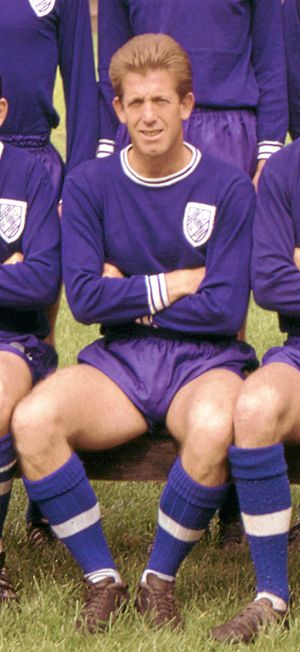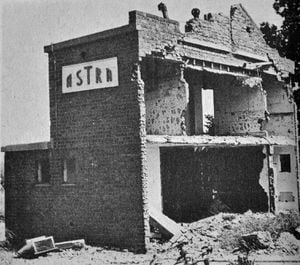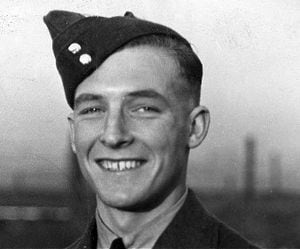Shropshire's square-bashing recruits who made their stamp on history
Sixty years ago, RAF Bridgnorth was home to hundreds of raw recruits and echoed to the sound of their marching feet.

The base closed in 1963 and, with proposals in the air which could see the site at Stanmore covered with hundreds of new homes in years to come, one of those recruits has been reflecting on the history of RAF Bridgnorth which provided so many memories to those youngsters of yesteryear.
Lawrence McGowan, who is now 78 and lives at Huntington, near Cannock, was to see RAF Bridgnorth both as a green recruit and later as a member of its staff. Yet he was a junior reporter on the Midland Chronicle and Free Press when he signed up for five years in the RAF.
"Cash income was the same, but all other living expenses were an additional benefit," says Lawrence.

He began his eight weeks of square-bashing at Bridgnorth in November 1960.
"Following trade training at RAF Credenhill, Hereford, I returned to Bridgnorth as permanent staff with the Records Office detachment in mid-1961," he said.
"I was posted out in December 1962 prior to closure of the site in February 1963. I was married at the time and lived-out with my wife in an RAF hiring at Severn Brow, Oldbury, Bridgnorth."
After his spell in the RAF he returned to journalism, eventually becoming deputy City editor at the Express & Star.

With his journalist's eye, he has been digging into the background of the Shropshire air base – it never had a runway – and some of its notable characters, not all of which have been human.
"The 100-acre Stanmore Country Park, for 24 years RAF Bridgnorth, is now home to celebrities of nature like the rare black poplar tree and several species of the nationally scarce hoverfly," says Lawrence.
"Squadron Leader George Leonard 'Johnny' Johnson, bomb aimer and last survivor of the famous 617 Squadron Dambuster raid of 1943, was on the permanent staff in 1956, as was Flying Officer Ramon Subba Row, England and Northants opener, who served as a flight commander until 1958.
"Comedian Ronnie Corbett and singer and comedian Des O'Connor were among the National Service graduates of the eight-week square-bashing tutorials.
"Sports icons include Cyril Washbrook, the Lancashire and England cricketer; Steve Bell, better known as Steve Veidor, British heavyweight professional wrestler; and Teddy Baldock, the 1927 world bantamweight boxing champion.
"Peter Broadbent, England and Wolves footballer, was there in 1951. Then there was Alf Meakin, Olympic sprinter (1959), Steve Fleet, later Manchester City goalkeeper (1956), Bobby Thomson of Wolverhampton Wanderers (1957), and Alex Murphy, Rugby League international (1960).

"My encounter with celebrity came when I returned to Bridgnorth in 1962 and was part of the Records Office detachment team that inducted South Pacific heavyweight boxing champion Lavemia Kitione Takitau, otherwise Kitione Lave, the 'Tongan Terror'.
"The erstwhile gardener and odd-job man to Tonga's Queen Salote Tupou III recorded 72 professional contests, 51 wins, 43 knockouts and a fastest KO of 65 seconds. Serving in Singapore in 1963 he boxed publicly twice, defeating Australian Tony Vickers and Fijian heavyweight champion Ismeli Radrodo."
As for the beginnings of the base, Lawrence says: "Built initially to house 2,000 recruits and 500 permanent staff, it opened as No 4 Recruit Training Centre on November 6, 1939. Enlarged in 1940, it was also used as a transit and kitting out centre for troops returning from France.
"In August 1941 it became No 1 Women's Auxiliary Air Force Depot, training WAAF recruits. By 1942 it had become No 1 Elementary Air Navigation School. The station ended life as No 7 School of Recruit Training with the motto Haec Porta Moenia Viri – 'this is the gate, the walls are men.'
"At one stage, it is claimed , the RAF presence at Stanmore supported a cinema, a dance hall and 64 pubs in Bridgnorth.

"As late as the 1960s it was a popular stop-off for coaches from Wolverhampton carrying family parties of grandmothers, aunts, mothers and daughters on a Saturday night pub crawl."
Today, says Lawrence, pheasants and foxes play hide and seek beneath wild woodland apple trees and blackberry brambles that grow where many tens of thousands pairs of feet once marched to the barked commands of a drill corporal.
"Serving personnel from RAF Cosford now maintain the standing remains of Number Three Wing airmen's mess chimney that is focal point of a memorial garden.
"A plaque reads: 'This memorial garden marks the site of the former Royal Air Force station Bridgnorth and commemorates those members of the RAF, WAAF, Commonwealth and Allied Forces who served here between 1939-1963.'
"Original concrete roads and pathways, many suitable for disabled and children's wheelchairs, meander through woodlands and wildflower meadows. B Squadron parade ground is now a car park and the hangars have been converted for business and visitor use. Officers' and airmen's married quarters are in private hands."




